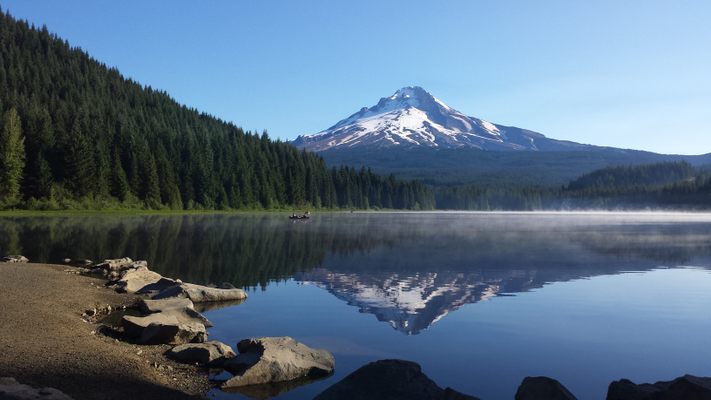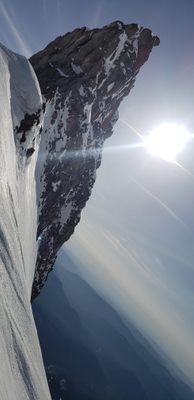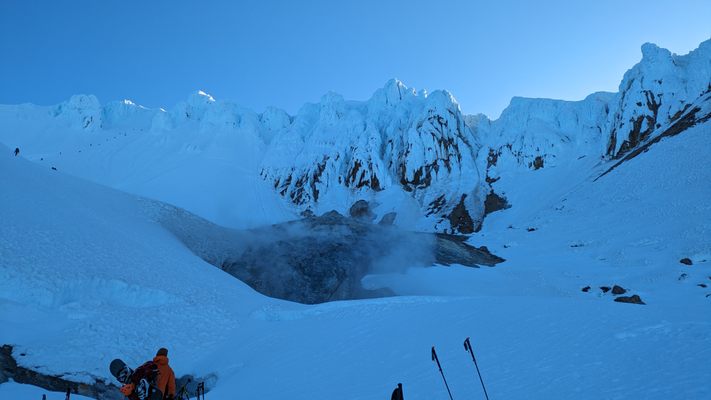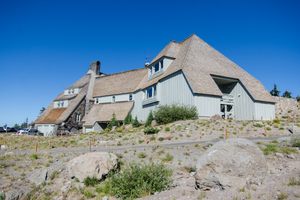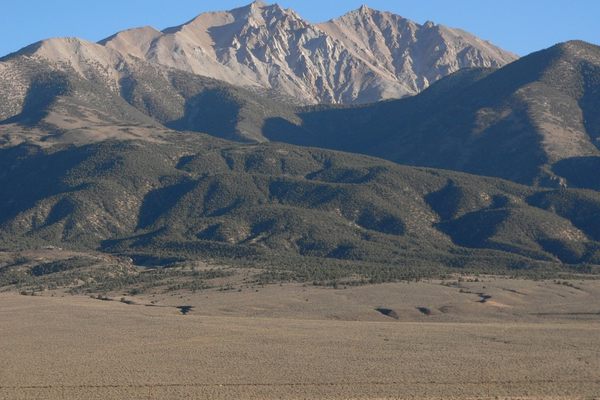About
One of the most recognizable mountains in the world, Mount Hood is quite a bit shorter than other famous peaks in the Cascades. It is only 11,239 feet above sea level and can usually be climbed in a single day. With thousands of people safely ascending and descending its slopes each year, it is hard to imagine that it would be one of the deadliest mountains on the continent. However, it is this false sense of security that makes it so dangerous.
Several routes are available to reach the highest point in Oregon. While there is a persistent urban legend claiming that it was climbed in high heels, anyone who has climbed Mount Hood will know immediately this is impossible. Every single route requires technical ice climbing with crampons, an ice axe, a helmet, and preferably a friend or two to rope up with. The standard route, known as the Hogsback or South Side Route, begins at the Timberline Lodge and climbs four miles and 5,300 feet to the summit. Guide services can sometimes make the trip shorter by driving groups up in a snowcat to beyond the lodge’s ski lifts.
Since the first recorded fatality in 1896, over 130 people have died on this mountain. Most die from either falls or hypothermia. The worst of these accidents occurred in 1986, when seven high school students and two of their faculty died during a dangerous storm. This disaster, still the second-deadliest in North American history, sparked the invention of the Mountain Locater Unit. The MLU was unique to Mount Hood and was required for all climbers from the late 1980s until 2017, when they were taken out of service. While it is no longer required, it is still a very good idea to carry a personal locator beacon.
While the standard route is relatively short, that does not mean it is easy or safe. Climbers must begin with an alpine start very early in the morning, around midnight to 2 a.m. As the sun rises, snow melts and becomes much harder to travel through. More importantly, ice and rock can come loose and can knock out even the most vigilant climbers. An area of active fumaroles known as the “Devil’s Kitchen” lies about a thousand feet below the summit and should not be approached because of the risk of suffocation. Other climbers can also create risks, like accidentally kicking ice chunks onto your head, or simply delaying your descent before the sun rises too much.
Multiple companies in the area offer guided services up the mountain. Many offer prospective climbers crash courses in the use of mountaineering equipment and techniques. Some even offer perks like dinner and a night in the Silcox Lodge, which gives climbers an even bigger head start. While such programs are excellent ways to make your climb safer and more fun, a guide’s expertise should never be considered a substitute for good judgment on your part. Even the common sense to check a weather report beforehand could save your life.
Related Tags
Know Before You Go
A safe climb up Mount Hood requires a great deal of preparation, both in terms of physical ability and knowledge. Even with a guide, you must be able to count on yourself to get out of trouble. Train for stamina and elevation gain. Those eight miles on the standard route will feel a lot longer when you’re actually there.
Climbing season typically lasts from late April to late June. From Timberline lodge, the standard route climbs up Palmer Glacier to the Triangle Moraine. From here, it follows a ridge called the Hogsback to the Devil’s Kitchen. Around here, poles are exchanged for an ice axe or two, as the route becomes much more vertical. Climbers generally enter either the steep and technical Pearly Gates, or the relatively gentler Old Chute to the summit.
Community Contributors
Added By
Published
August 5, 2014
Sources
- https://www.peakbagger.com/peak.aspx?pid=2382
- https://en.wikipedia.org/wiki/Mount_Hood_climbing_accidents
- https://traveloregon.com/things-to-do/destinations/mountains/mt-hood/?utm_source=AtlasObscura&utm_campaign=Spring2019&utm_medium=display&utm_content=customcontent
- http://www.summitpost.org/mount-hood/150189
- http://en.wikipedia.org/wiki/Mount_Hood




